| Location | Medellín, Colombia |
| Date | 2004-9 |
| Affected Population | 170 000 inhabitants |
| Implementing Agency | Empresa de Desarrollo Urbano de Medellín (Economic Development of Medellín) |
| Program Management | Carlos Alberto Montoya Correa, Alejandro Echeverri Restrepo, Carlos Mario Rodríguez Osorio |
| Design Team | Luis Fernando Arango Arboleda, Eliana Idárraga Castaño, Carmen Elisa Hurtado Figueroa, Andrés Benítez Giraldo, Esteban Henao, Héctor Javier Cruz Londoño, John Octavio Ortiz Lopera, Mauricio Iván Mendoza Martinez, Ana Milena Vergara Monsalve, Oscar Montoya, Francesco Maria Orsini, Diego Armando Pino Pino, Claudia Juliana Portillo Rubio, Carlos David Montoya Valencia, Oscar Mauricio Santana Vélez, Isabel Arcos Zuluaga |
| Additional Agencies | Programa de Paz y Reconciliación (Peace and Reconciliation Program) |
| Funder | CITY OF MEDELLÍN |
| Program Cost | $365 million USD |
| Area | 158 hectares/390 acres |
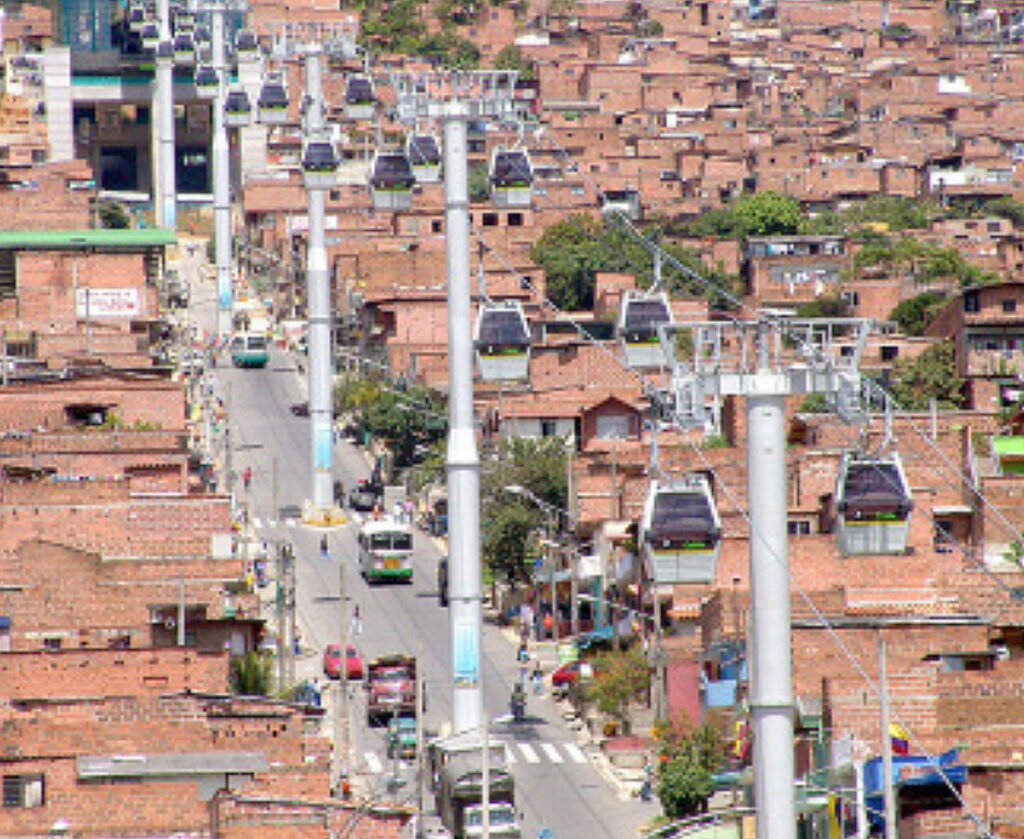
top image: Medellin’s Metrocable scales the hillside city. Image: Empresa de Desarrollo Urbano/Alcaldía de Medellín

far left image: Near the Santo Domingo area before improvements were made. Image: Empresa de Desarrollo Urbano/Alcaldía de Medellín
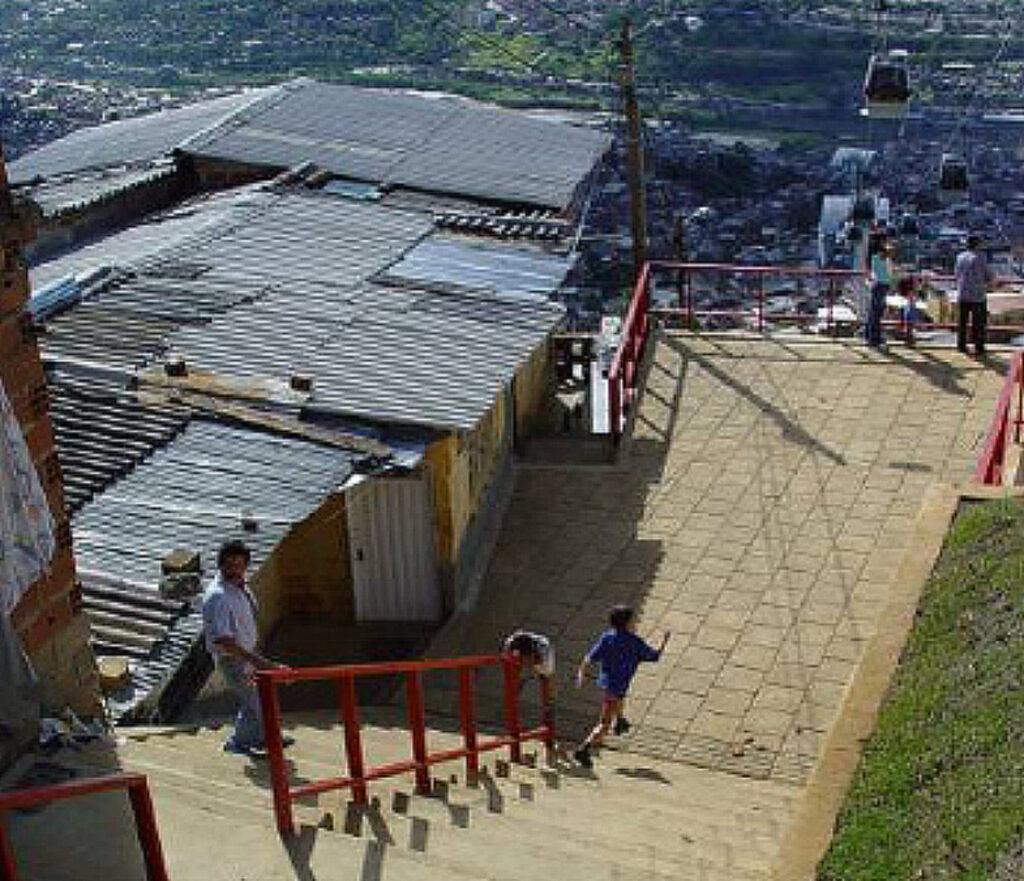
left image: Paved pathways replace steep dirt pathways. Image: Empresa de Desarrollo Urbano/Alcaldía de Medellín
Starting in the 1960s political instability led to the rise of paramilitary groups and armed conflict throughout Colombia. As groups such as Revolutionary Armed Forces of Colombia rose to power, violence forced Colombia’s rural poor from their land. The flight from the countryside into the urban area lead to the rise of informal settlements and street crime. Para-military groups and gangs controlled the hillside slums of Medellin. Throughout much of the 1980s and 1990s Medellin was considered the capital of the cocaine trade. (In 1987 Forbes magazine estimated that 80 percent of the global cocaine marketwas controlled by the Medellín Cartel.)
In 1999, then President Andres Pastrana proposed “Plan Colombia.” With aid from the United States and other countries, Plan Colombia called for the investment of $7.5 billion USD over the course of the next decade in sweeping reforms aimed at ending the drug trade. While the bulk of these funds were directed toward demilitarization and counternarcotics, Plan Colombia also made way for significant investment—more than $1.3 billion in the United States alone for social infrastructure and programs. These programs worked to disarm paramilitary groups.
The national government signed an accord with the paramilitary and narco-traffic groups, and began a long-term commitment to reintegrate ex-combatants into the social fabric of the nation. On the heels of these investments, Medellin’s transformation began.
In 2003, Sergio Fajardo, a mathematician and the son of an architect, was elected mayor of Medellin. “We spent all our time saying how our society should be, but the politicians are the ones who make all the decisions in society. So, with a group of friends, we said we are going to have to get into politics.” Fajardo ran on a platform of social renewal and articulated a plan for reducing violence and revitalizing the city. When he was elected in 2003, he began implementing the plan: “We had a formula to solve the problem. We have to start reducing violence, but whenever we reduce violence we immediately have to come back with social interventions. And we brought in architecture,” Fajardo explained in a television interview.
“We would go to the poorest neighborhoods and build the most beautiful buildings. So suddenly in the places where there was no hope we were building the most incredible spaces—but all were related to opportunities. “ During his administration, the city invested 47 percent of its budget in schools, libraries, cultural centers, public spaces, job training centers and transit. These investments were tied to slum upgrading programs and social programs to reintegrate ex-combatants.
| Feature Project | Metrocable |
| Location | Zona Nororiental de Medellín, Colombia |
| Date | 2003-4 |
| Beneficiaries | 170 000 residents in the Zona Nororiental |
| Project Architects | María Bustamante, Edison Escobar Osorno |
| Project Engineers | Sergio Acosta, Adriana Arcila, Jorge Ramos |
| Construction Team | U.T. Telecabinas Medellin (Pomagalski, ConConcreto, y Termotecnica Coindustrials) |
| Funders | City of Medellín; Metro Medellín |
| Cost | $25 million USD |
| Area | 2072 m/6797 ft |
| Occupancy | 93 cabins |
Proyecto Urbano Integral not only focused on building safe transportation systems, education hubs and business development facilities, but focused those investments in place, ensuring that new libraries were located near transit hubs and bridging barrios separated by creeks and deep ravines.
“We use architecture in a very simple way to change the mind of the people and the barrios,” said Alejandro Echeverri Restrepo, then the city’s director of urban projects for the mayor’s office of Medellin.
The first Proyecto Urbano Integral revitalization area was Communa Noroiental in the Santo Domingo—one of the cities poorest and most violent neighborhoods. It is home to 11 neighborhoods of 170 000 residents, most living in informal dwellings along the steep hillsides to the north of the city center. Perhaps the most attention-getting project is the city’s Metrocable transit system. To connect the informal barrios to the subway and the formal city in the valley below, the city built a public gondola that scales the steep hillside. Running the length of the gondola is a series of public parks, job training centers and schools . At the top, purposely situated next to the metro station, the city built Parque Biblioteca España (now one of five library parks in Medellin). Designed by architect Giancarlo Mazzanti, it resembles three massive, etched black boulders and is visible throughout the city. Completed in 2007, at a cost of $4 million USD, it marked the first formal civic structure in the informal settlement.
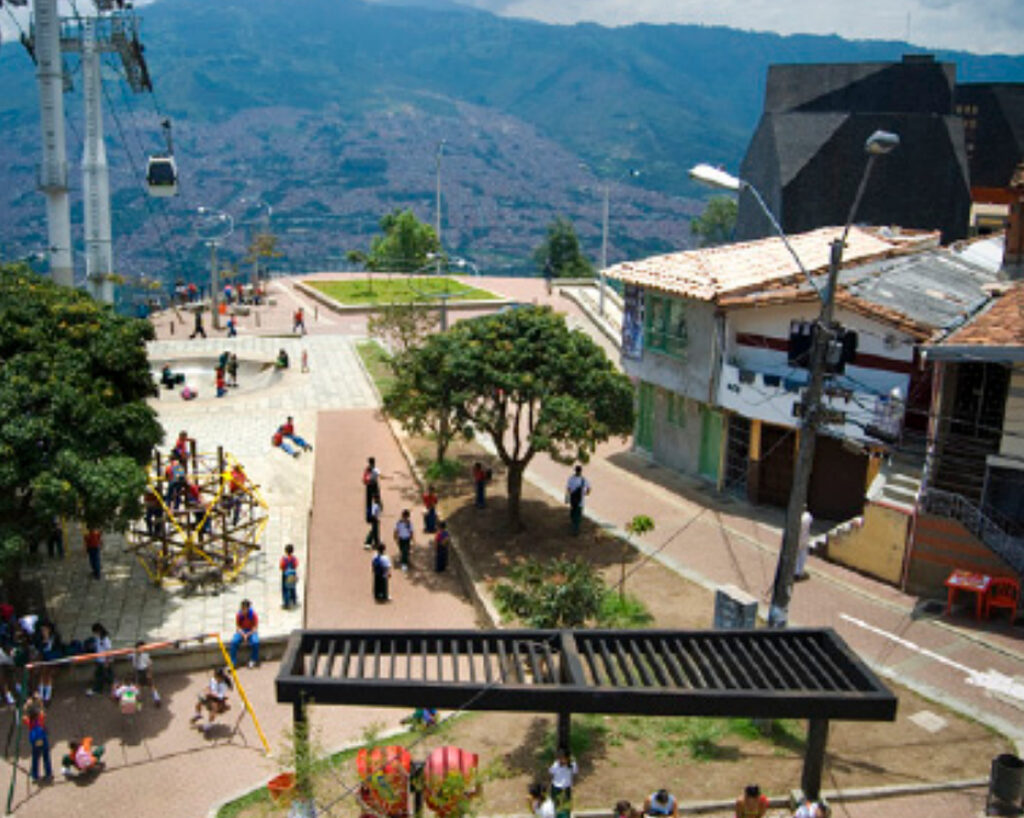
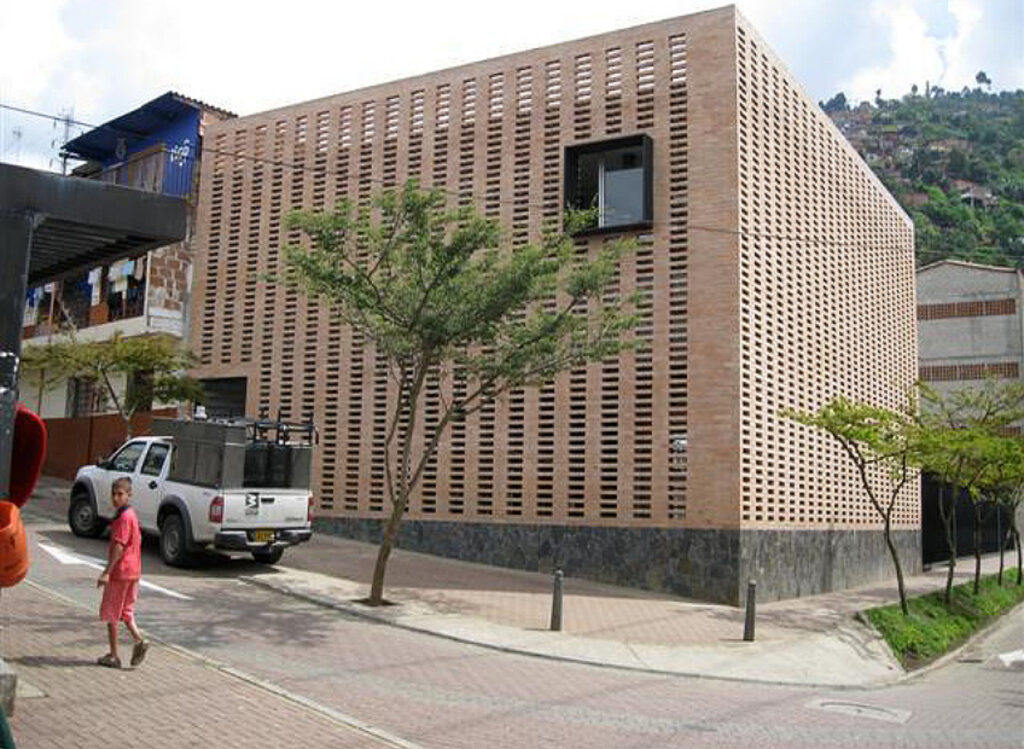
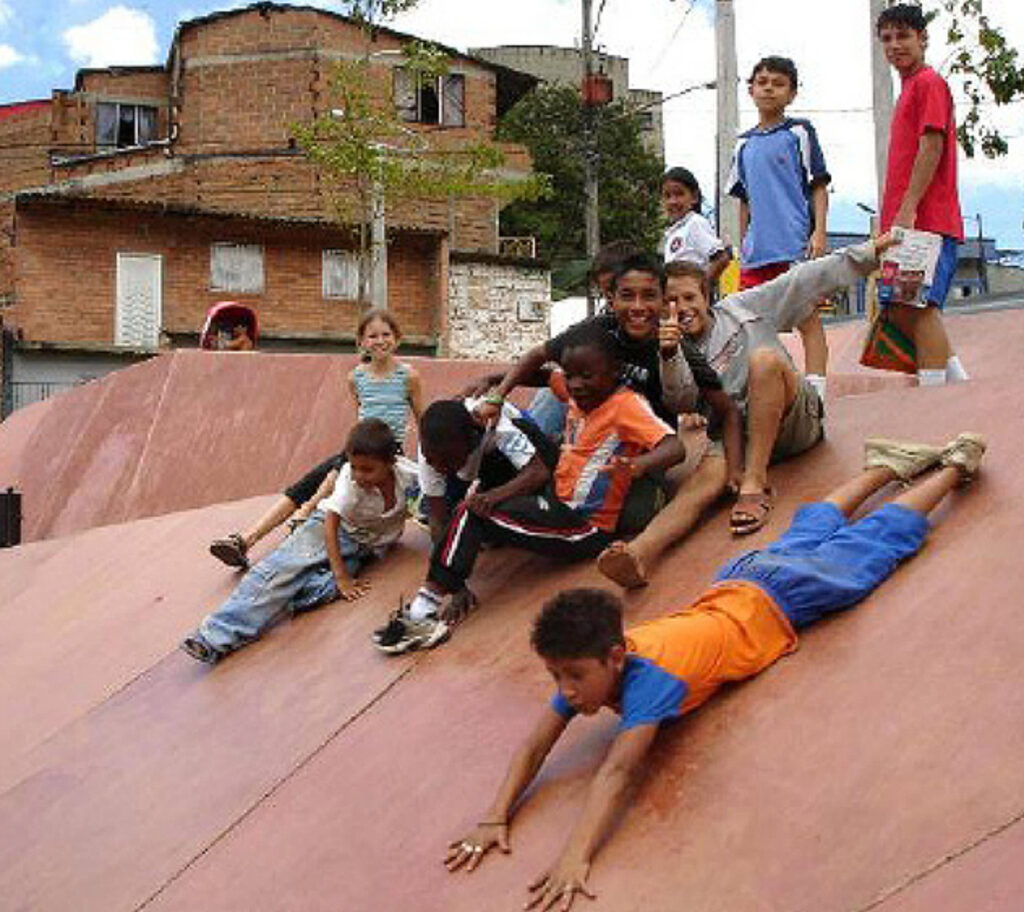
left image: Parque Mirador Ninos is located at the base of a Metrocable station. The park hosts community festivals and performance events. Photo: Diana Moreno/Empresa de Desarrollo Urbano Alcaldia de Medellin
middle image: A health center was one of the many community projects built to improve the city. Photo: Michael Grote/Architecture for Humanity
right image: Children’s park in Santo Domingo provides a safe place for youth to play.
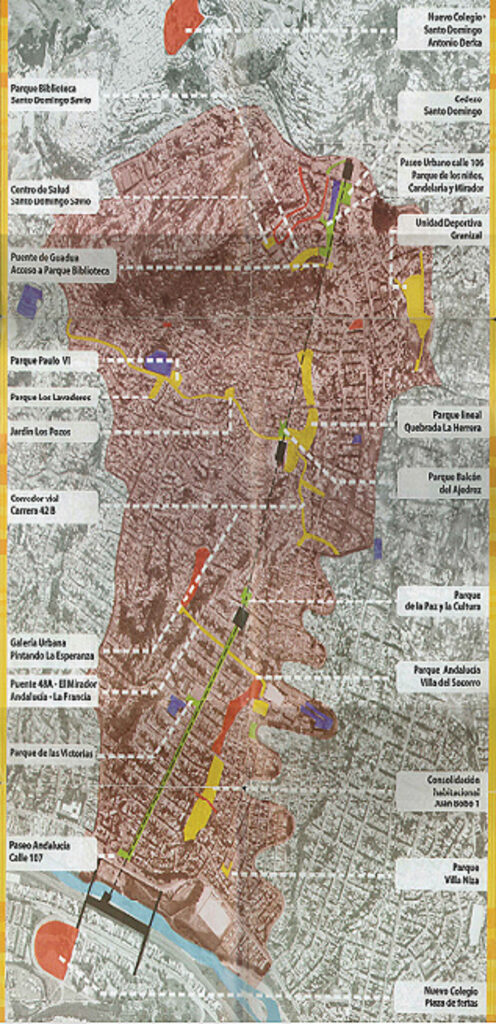
The map shows all the different projects underway. Image: Empresa de Desarrollo Urbano/ Alcaldía de Medellín.
“Violence has terrible consequences all over, one of those is that violence splits society into smaller groups. So instead of becoming citizens, we are fearful of other people in the city, we are restricted. So what we did was we created new public spaces which are going to come together. Together these public spaces and new transit helped to create links between barrios and the city, providing greater access to jobs, services and opportunity.
Medellin, the center of Colombia’s textile industry, funded the upgrades through a mix of national funding and new taxes. In 2002 the city had expanded the scope of an existing local economic development corporation, chargedwith upgrading public spaces, and renamed it Empresa de Desarrollo. As an autonomous agency, it had broad latitude to partner across sectors and across agencies allowing it to direct and thread funding from different city budgets. This was a key element to the success of the city’s urban upgrading initiatives. To date, the city has invested 424 billion Colombian pesos ($212 million USD) in tandem with another $360 million USD in annual spending on education.
By 2007, the city’s murder rate had fallen to 26 murders per 100 000 inhabitants. While the changes have not ended violence altogether (after a downward trend, the city’s murder rate spiked again in 2009, more than doubling to 170 per population of 100 000), they have brought a sea change in the social landscape of the city. Today, the Empresa des Desarrollo has more than 180 projects underway. In each barrio a community manager helps to coordinate and integrate the projects with social initiatives and goals, such as job training for ex-combatants. Tourism has increased, along with property values-and property taxes.
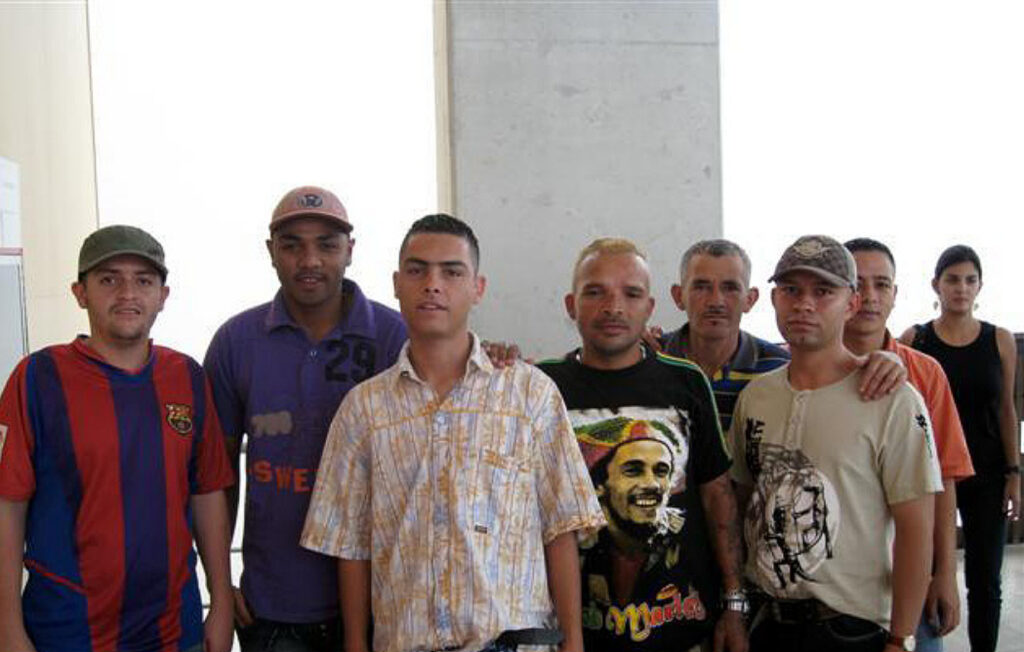
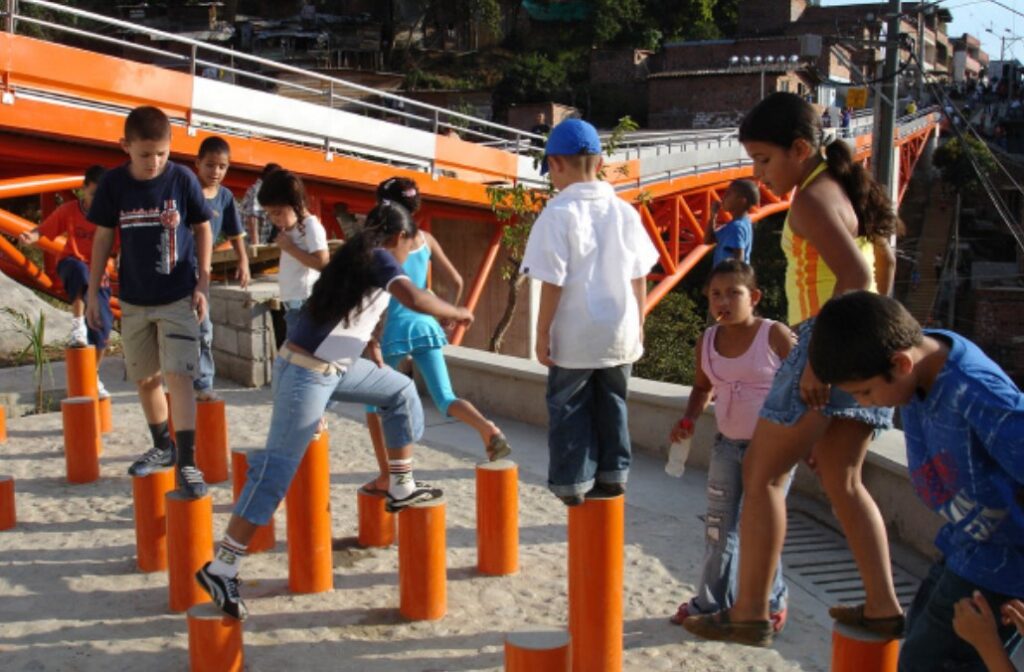
left image: Residents enjoying the new community space around the Metrocable. Photo Credit: Michael Grote/Architecture for Humanity
right image: Kids play in one of the several new parks designed for their enjoyment. Photo: Empresa de Desarrollo Urbano/ Alcaldía de Medellín
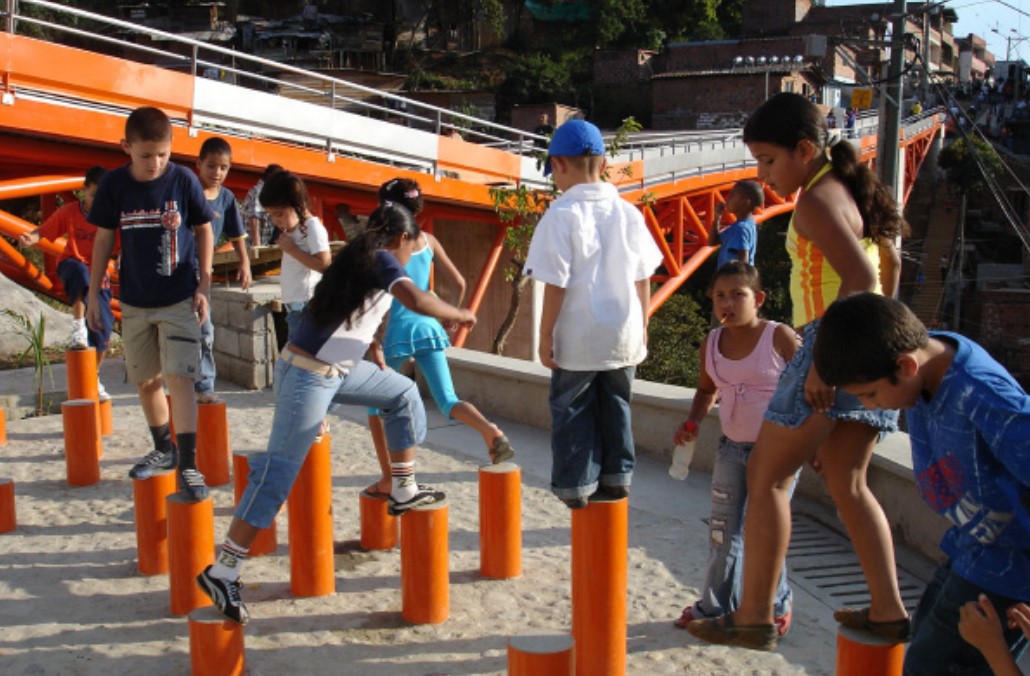















READ OR LEAVE A COMMENT